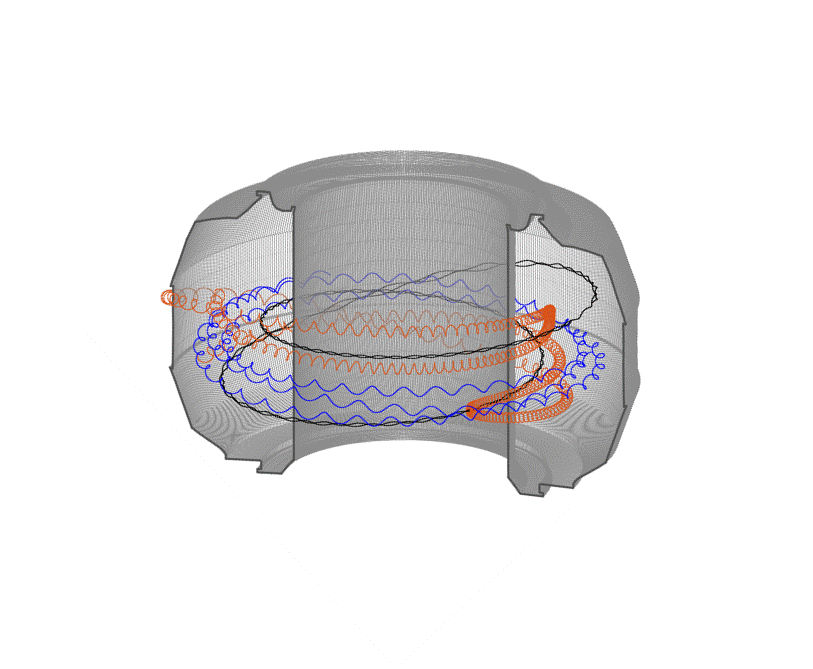
Filter News
Area of Research
- Advanced Manufacturing (1)
- Biology and Environment (73)
- Clean Energy (22)
- Climate and Environmental Systems (1)
- Computational Biology (2)
- Fusion and Fission (22)
- Fusion Energy (15)
- Materials (27)
- Materials for Computing (7)
- National Security (6)
- Neutron Science (6)
- Nuclear Science and Technology (8)
- Supercomputing (14)
News Topics
- (-) Biology (100)
- (-) Fusion (57)
- (-) Polymers (33)
- 3-D Printing/Advanced Manufacturing (125)
- Advanced Reactors (34)
- Artificial Intelligence (98)
- Big Data (60)
- Bioenergy (92)
- Biomedical (60)
- Biotechnology (23)
- Buildings (62)
- Chemical Sciences (71)
- Clean Water (31)
- Climate Change (104)
- Composites (29)
- Computer Science (195)
- Coronavirus (46)
- Critical Materials (29)
- Cybersecurity (35)
- Decarbonization (82)
- Education (4)
- Element Discovery (1)
- Emergency (2)
- Energy Storage (112)
- Environment (198)
- Exascale Computing (41)
- Fossil Energy (6)
- Frontier (45)
- Grid (66)
- High-Performance Computing (91)
- Hydropower (11)
- Irradiation (3)
- Isotopes (56)
- ITER (7)
- Machine Learning (49)
- Materials (146)
- Materials Science (145)
- Mathematics (9)
- Mercury (12)
- Microelectronics (4)
- Microscopy (51)
- Molten Salt (9)
- Nanotechnology (60)
- National Security (71)
- Net Zero (14)
- Neutron Science (134)
- Nuclear Energy (111)
- Partnerships (49)
- Physics (64)
- Quantum Computing (37)
- Quantum Science (71)
- Renewable Energy (2)
- Security (25)
- Simulation (50)
- Software (1)
- Space Exploration (25)
- Statistics (3)
- Summit (59)
- Sustainable Energy (130)
- Transformational Challenge Reactor (7)
- Transportation (97)
Media Contacts

A team of researchers at Oak Ridge National Laboratory have demonstrated that designed synthetic polymers can serve as a high-performance binding material for next-generation lithium-ion batteries.

Vera Bocharova at the Department of Energy’s Oak Ridge National Laboratory investigates the structure and dynamics of soft materials—polymer nanocomposites, polymer electrolytes and biological macromolecules—to advance materials and technologies for energy, medicine and other applications.

Scientists have tested a novel heat-shielding graphite foam, originally created at Oak Ridge National Laboratory, at Germany’s Wendelstein 7-X stellarator with promising results for use in plasma-facing components of fusion reactors.

Carbon fiber composites—lightweight and strong—are great structural materials for automobiles, aircraft and other transportation vehicles. They consist of a polymer matrix, such as epoxy, into which reinforcing carbon fibers have been embedded. Because of differences in the mecha...

If you ask the staff and researchers at the Department of Energy’s Oak Ridge National Laboratory how they were first referred to the lab, you will get an extremely varied list of responses. Some may have come here as student interns, some grew up in the area and knew the lab by ...

Mircea Podar has travelled around the world and to the bottom of the ocean in pursuit of scientific discoveries, but it is the uncharted territory he encounters when working with new microbes that inspires his research at ORNL.

The materials inside a fusion reactor must withstand one of the most extreme environments in science, with temperatures in the thousands of degrees Celsius and a constant bombardment of neutron radiation and deuterium and tritium, isotopes of hydrogen, from the volatile plasma at th...

Fusion scientists from Oak Ridge National Laboratory are studying the behavior of high-energy electrons when the plasma that generates nuclear fusion energy suddenly cools during a magnetic disruption. Fusion energy is created when hydrogen isotopes are heated to millions of degrees...

Oak Ridge National Laboratory scientists have developed a crucial component for a new kind of low-cost stationary battery system utilizing common materials and designed for grid-scale electricity storage. Large, economical electricity storage systems can benefit the nation’s grid ...

An Oak Ridge National Laboratory–led team has developed super-stretchy polymers with amazing self-healing abilities that could lead to longer-lasting consumer products.


